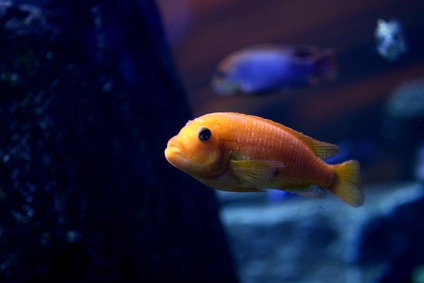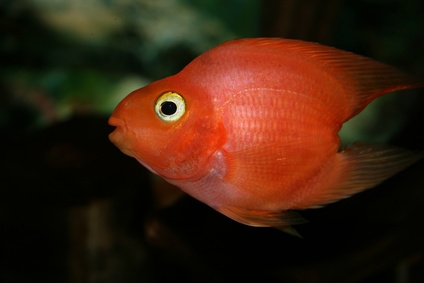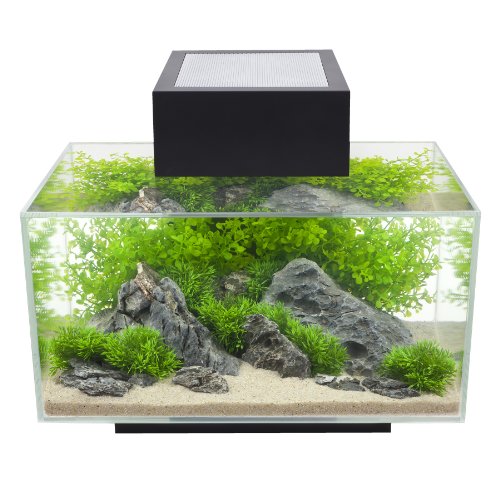
Scientific Name: Tanichthys albonubes
Breeding Method: Egg layers
Ease of Breeding: Easy
Introduction: These active and attractive red-tailed minnows were discovered in a mountain stream in the 1930s by a Chinese Boy Scout. They are hardy and easy to keep in a community tank, although they like lower temperatures than many tropical species. White Clouds are happiest when kept with other members of their own species. They can be bred in community, species, and spawning tanks.
Sex Differences: Males have brighter coloration; females are larger and plumper, par¬ticularly when full of eggs.
Water Conditions: Hardness and pH not critical. Temperature should be between 62° and 75°F; if it gets much higher than that, the fish may become stressed.
Equipment: Start with a tank of at least 10 gallons, located where it will get some sun. Add gravel, water, and some fine-leaved plants such as Fontinalis, Myriophyllum, or Elodea, and/or several spawning mops. You should also start an infusoria culture at the time of spawning, since the fry are too tiny to eat most other foods. Conditioning and Triggers: Start with a pair that is about a year old; some breeders recommend a group of two males and four females. Condition them separately for about a week with live and freeze-dried foods such as brine shrimp and daphnia before moving them to the spawning tank.
Some breeders say that leaving the light on for about 14 hours and doing 20-percent water changes every few days also helps bring fish into breeding con¬dition.
Spawning: The male will "dance" in front of the female with his fins spread wide. He may nudge her abdomen. She will choose a plant as a spawning site, and he'll wrap himself around her. She will release her eggs singly. Spawning may continue for several hours. There is disagreement as to whether parents eat their eggs or fry, so keep a close watch and be prepared to remove them if necessary. Lowering the water temperature slightly can sometimes trigger spawning.
Brood Size: Reports vary from three dozen to 300 eggs from a single spawning.
Fry Care: Within 24 to 36 hours, the eggs will hatch and you'll see fry clinging to the sides of the glass. They will use up their yolk sacs and become free swimming within several days. They are too small for most fry foods, so feed infusoria or prepared fry food. Within a few days, you can add microworms, and after about a week, newly hatched brine shrimp. The fry are sensitive to both water quality and fluctuating water conditions, so do small regular changes and be sure to keep the temperature stable.
Special Notes: Fry are sexually mature and ready to breed within six months.
 9 Common Mistakes of Freshwater Fish Owners
Keeping fish in an aquarium
9 Common Mistakes of Freshwater Fish Owners
Keeping fish in an aquarium
 How to Take Care of a Baby Parrot Fish
How to Take Care of a Baby Parrot Fish
How to Take Care of a Baby Parrot Fish
How to Take Care of a Baby Parrot Fish
 Compatibility Between Freshwater Tropical Fish
Compatibility Between Freshwater Tropical Fish
Compatibility Between Freshwater Tropical Fish
Compatibility Between Freshwater Tropical Fish
 Life Span of Female Betta Fish Vs. Male
Life Span of Female Betta Fish Vs. Male
Life Span of Female Betta Fish Vs. Male
Life Span of Female Betta Fish Vs. Male
 Setting Up a Saltwater Aquarium
A saltwater aquarium is a lo
Setting Up a Saltwater Aquarium
A saltwater aquarium is a lo
Copyright © 2005-2016 Pet Information All Rights Reserved
Contact us: www162date@outlook.com